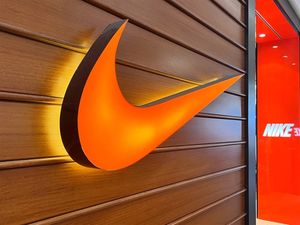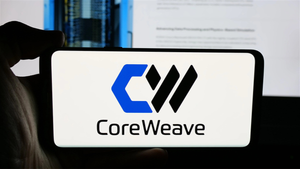Financial News
Intuitive Surgical's Stellar Q2 2025 Performance Propels Robotic Surgery Market Forward

Sunnyvale, CA – September 17, 2025 – Intuitive Surgical (NASDAQ: ISRG), the pioneer and global leader in robotic-assisted surgery, has once again demonstrated its formidable market position with a robust second-quarter 2025 earnings report. The company announced an impressive adjusted Earnings Per Share (EPS) of $2.19, significantly surpassing analyst expectations, coupled with a substantial 21.4% year-over-year revenue increase to $2.44 billion. This stellar performance, primarily fueled by strong da Vinci system placements and a surge in procedure volumes driven by the next-generation da Vinci 5 platform, has garnered positive outlooks from analysts, leading to raised price targets and a reaffirmation of Intuitive's dominant trajectory in the rapidly evolving robotic surgery landscape.
While the initial market reaction saw Intuitive Surgical's stock experiencing mixed sentiment, with a slight dip before stabilizing, the underlying financials paint a clear picture of strength. The company's consistent innovation and strategic market expansion continue to solidify its leadership, setting new benchmarks for precision and efficiency in surgical care.
Da Vinci 5 Propels Intuitive Surgical to New Heights
Intuitive Surgical’s Q2 2025 success is a testament to its relentless pursuit of innovation and strategic execution. The company's revenue growth of 21% to $2.44 billion, combined with a 23% increase in non-GAAP diluted EPS to $2.19, significantly outpaced analyst consensus. This strong financial health is underpinned by key operational drivers.
Worldwide da Vinci procedure volume increased by approximately 17% in Q2 2025 compared to the prior year, marking a steady upward trend. This growth was particularly strong internationally and across various U.S. benign general surgery cases. Critically, Intuitive placed 395 da Vinci surgical systems during the quarter, a notable increase from 341 systems in Q2 2024. A substantial portion of these placements, 180 units, were the groundbreaking da Vinci 5 systems, more than doubling the 70 units placed in the same period last year. This rapid adoption expanded the global installed base of da Vinci systems to 10,488 as of June 30, 2025, a 14% year-over-year increase. The recurring revenue stream from instruments and accessories, which accounts for a significant 85% of total revenue, also saw an 18% increase, highlighting the stickiness of Intuitive's ecosystem.
The da Vinci 5 system, cleared by the FDA in March 2024, stands as a pivotal development. It is Intuitive’s most advanced and integrated multiport platform, boasting over 150 design innovations and an astonishing 10,000 times more computing power than its predecessor, the da Vinci Xi. Its flagship innovation, Force Feedback technology, allows surgeons to "feel" the pressure applied to tissue, a revolutionary advancement that has shown to reduce applied force by up to 43% in preclinical trials. This feature, along with enhanced 3D imaging and advanced tremor control, directly addresses long-standing challenges in robotic surgery, enhancing precision and potentially improving patient outcomes. Further bolstering its capabilities, the da Vinci 5 received European certification (EU MDR) in July 2025 for adult and pediatric minimally invasive endoscopic procedures, paving the way for broader international expansion. Post-Q2, in September 2025, Intuitive introduced new FDA-cleared software features, including Force Gauge and In-Console Video Replay, further cementing the system's advanced capabilities and demonstrating a continuous innovation cycle.
The timeline leading to these strong earnings showcases a consistent growth trajectory. Following its FDA clearance in March 2024, the da Vinci 5 quickly gained traction, with strong placements in Q4 2024 and Q1 2025. The Q2 2025 report solidified its impact, while recent software upgrades and international certifications underscore Intuitive’s ongoing commitment to enhancing its leading platform. Despite the impressive financial results, initial market reactions to the stock were somewhat tempered, suggesting that much of this anticipated growth might have already been priced in. However, analysts such as Piper Sandler, Baird, and Bernstein reiterated or raised their price targets, signaling continued confidence in Intuitive's long-term prospects.
Robotic Surgery's Shifting Tides: Winners and Challengers
Intuitive Surgical's (NASDAQ: ISRG) commanding Q2 2025 performance and the successful rollout of the da Vinci 5 have clearly positioned the company as a significant winner, while intensifying pressure on competitors vying for a share of the burgeoning robotic surgery market.
Intuitive Surgical itself is the unequivocal beneficiary. Its robust financial performance, marked by beating EPS and revenue expectations, and the increased full-year procedure growth forecast, underscore its operational excellence. The da Vinci 5's rapid adoption, driven by its innovative force feedback and enhanced computing power, is not only expanding Intuitive's installed base but also reinforcing its market dominance. With an estimated 57% global market share in 2024 and an installed base exceeding 10,000 systems, Intuitive's extensive ecosystem, high switching costs for hospitals, and strong recurring revenue model create a formidable competitive moat. Continuous innovation through software upgrades and strategic international expansion further solidifies its leadership.
On the other side, several rivals face considerable challenges in their quest to unseat or even significantly challenge Intuitive's stronghold:
- Medtronic (NYSE: MDT) and its Hugo robotic-assisted surgery system have encountered manufacturing issues and launch delays, missing key deadlines. While Hugo is gaining traction internationally, it significantly lags behind Intuitive in terms of procedure volume and installed base. Medtronic faces an uphill battle to build a comparable comprehensive ecosystem and overcome Intuitive's entrenched position, especially in the crucial U.S. market.
- Johnson & Johnson (NYSE: JNJ) with its Ottava surgical robot has also been beset by significant development and regulatory delays. Analysts suggest the U.S. launch for soft tissue applications is still at least two years away, despite some progress in clinical trials. Like Medtronic, J&J faces the immense task of replicating Intuitive's decades-long head start and its established network of hardware, software, training, and support.
- Stryker (NYSE: SYK) and Zimmer Biomet (NYSE: ZBH), while leaders in orthopedic robotics with their Mako SmartRobotics and ROSA systems respectively, primarily operate in a distinct market segment (orthopedic surgery) from Intuitive's broad soft tissue dominance. While both companies are innovating within their niches, they are not direct challengers to Intuitive's core surgical applications. Competition within the orthopedic robotics space itself is intensifying.
- CMR Surgical with its Versius system offers a potentially disruptive alternative due to its modularity, portability, and claimed cost-effectiveness (30-40% less expensive over its lifetime). Having gained FDA authorization for gallbladder removal in October 2024, Versius is making inroads into the U.S. soft tissue market ahead of some larger competitors. However, its installed base remains significantly smaller than Intuitive’s, posing a considerable challenge for widespread market penetration.
Healthcare providers (hospitals and surgery centers) stand to gain from improved patient outcomes, enhanced surgical capabilities through advanced features like force feedback, and potential long-term operational efficiencies. However, they also grapple with the high upfront costs of da Vinci systems, substantial training investments, and the potential for vendor lock-in due to Intuitive's extensive ecosystem. Medical device suppliers directly supporting Intuitive Surgical are likely to see increased demand for components and accessories. In contrast, those primarily aligned with lagging competitors or focusing solely on traditional surgical instruments may face challenges as the market shifts towards robotic-assisted procedures.
A New Era for Med-Tech: Broader Industry Resonances
Intuitive Surgical's Q2 2025 triumph, driven by the da Vinci 5, is more than just a company success story; it's a powerful signal reverberating across the entire med-tech industry, fundamentally shaping broader trends in robotic surgery adoption, stimulating competitive responses, and influencing regulatory landscapes.
The success of the da Vinci 5 reinforces the accelerating trend of robotic surgery adoption across diverse medical specialties. With its enhanced precision, minimally invasive benefits, and advanced features like force feedback, the da Vinci 5 pushes the boundaries of what's achievable, encouraging more institutions to invest in state-of-the-art robotic platforms. This innovation solidifies Intuitive’s leadership and sets a new benchmark for competitors, compelling them to accelerate their R&D in comparable advanced features like AI-driven insights and haptic feedback to stay relevant. This intensified innovation race is likely to spur increased R&D spending across the med-tech sector, with a renewed focus on developing new products and improving existing ones to meet evolving market demands. Smaller, innovative robotic surgery developers may become attractive acquisition targets for larger companies seeking to quickly gain market share or specialized technological expertise.
From a regulatory perspective, the da Vinci 5’s FDA 510(k) clearance signifies its substantial equivalence to existing devices, meeting U.S. safety and effectiveness standards. Internationally, the system's European certification (EU MDR) is particularly noteworthy. The EU MDR imposes much stricter requirements for medical devices, demanding extensive clinical trial testing and rigorous post-market surveillance. For complex, high-risk systems like robotic surgical platforms, this means navigating heightened scrutiny and comprehensive technical documentation to achieve CE marking, a process that can be resource-intensive for all manufacturers. Intuitive's successful navigation of these stringent global regulations sets a precedent and underscores the increasing burden on all medical device companies to ensure robust data and clinical evidence.
Historically, truly disruptive medical technologies, such as Magnetic Resonance Imaging (MRI) or the initial launch of the da Vinci system itself, have fundamentally transformed clinical practice and industry landscapes. These precedents demonstrate that successful innovations not only lead to improved patient outcomes and create new markets but also trigger a wave of innovation and competition as others strive to enter or expand within the newly validated technological space. The da Vinci 5's advancements, particularly in haptic feedback, could prove to be another such inflection point, accelerating the evolution of surgical techniques and training. Intuitive’s sustained R&D investment and focus on ecosystem development illustrate how market leaders maintain their edge, compelling others to follow suit or strategically differentiate.
The Horizon of Robotic Surgery: What Comes Next
Looking ahead, Intuitive Surgical's (NASDAQ: ISRG) strong Q2 2025 performance and the successful integration of the da Vinci 5 position the company for continued robust growth, while shaping the future trajectory of the entire robotic surgery market.
In the short-term (12-24 months), Intuitive Surgical is poised to capitalize on the increasing adoption of the da Vinci 5 globally. The company's focus will be on securing regional clearances beyond its initial U.S. and European certifications, expanding its training and commercial activities to drive procedure growth in new markets and across more specialties. The recurring revenue from instruments and accessories will continue to provide a stable financial foundation. Intuitive's updated full-year 2025 guidance projects worldwide da Vinci procedure growth of 15.5% to 17%, indicating sustained momentum, with a non-GAAP gross margin expected to range between 66% and 67%.
Longer-term (3-5 years and beyond), Intuitive’s growth will be fueled by continuous innovation, particularly in integrating artificial intelligence (AI), machine learning, and advanced data analytics into its platforms. The da Vinci 5's enhanced computing power creates a fertile ground for sophisticated AI algorithms that can offer real-time surgical guidance, predictive analytics, and personalized surgeon training. Strategic global market penetration, especially in high-growth emerging economies like India and China, will be critical. The company will also seek to expand robotic surgery into new and underserved specialties, thereby expanding its total addressable market. Analysts project that Intuitive’s stock could reach $900-$1,000 by 2030, assuming robotic surgery penetrates 30% of eligible procedures, with revenues potentially doubling to $14 billion, driven by AI and global expansion.
For Intuitive Surgical, potential strategic pivots include deepening its AI and data analytics capabilities, potentially exploring more cost-effective system configurations to cater to a broader range of hospitals, and further expanding its robust training and proctoring networks globally. Competitors, in response, will likely intensify their focus on niche specialization (e.g., orthopedics, neurosurgery), offer more modular or cost-effective systems, or pursue aggressive mergers and acquisitions to accelerate their technological capabilities. The trend towards integrated solutions that combine imaging, navigation, and cloud-based analytics will become even more pronounced.
Emerging market opportunities are vast, driven by the increasing global demand for minimally invasive procedures and the advent of AI in surgical care. Geographic expansion into Asia-Pacific and Latin America, alongside the growth of ambulatory surgery centers (ASCs), presents significant avenues for market growth. Challenges persist, however, including the high upfront costs of robotic systems, intensifying competition, complex regulatory hurdles, and the ongoing need for extensive surgeon training. Cybersecurity risks for increasingly connected systems also loom large.
Various scenarios for the robotic surgery market exist. An accelerated innovation and adoption scenario sees rapid technological advancements, favorable policies, and widespread adoption, with the market potentially exceeding $20 billion by 2030. A moderate growth scenario anticipates steady advancements but continued challenges from high costs and competition. A slower growth scenario could emerge due to economic downturns, stringent regulations, or public skepticism. Intuitive’s strategic agility and commitment to innovation will largely determine its success within these evolving dynamics.
Conclusion: Intuitive Surgical's Enduring Impact
Intuitive Surgical's stellar Q2 2025 earnings and the successful, early adoption of its da Vinci 5 system represent a pivotal moment, reaffirming the company's unparalleled leadership in the robotic-assisted surgery market and underscoring the enduring significance of innovation in med-tech. The reported EPS of $2.19 and a remarkable 21.4% year-over-year revenue increase are not merely financial metrics; they are indicators of a profound and ongoing transformation in surgical care, driven by advanced robotics.
The market moving forward will be characterized by a fascinating duality: Intuitive Surgical's continued dominance, buttressed by its robust ecosystem and cutting-edge da Vinci 5, alongside an increasingly competitive environment. While rivals like Medtronic (NYSE: MDT) and Johnson & Johnson (NYSE: JNJ) are making efforts to enter the soft tissue robotic surgery space, Intuitive's significant head start, vast installed base, and continuous innovation create substantial barriers to entry. The da Vinci 5, with its revolutionary force feedback and advanced computing power, sets a new standard, pushing the entire industry towards more precise, intuitive, and data-driven surgical solutions.
For investors, the key takeaways are Intuitive's proven resilience, its capacity for disruptive innovation, and its highly profitable recurring revenue model. The lasting impact of this period will likely be the accelerated integration of AI and machine learning into surgical platforms, a broader global adoption of robotic-assisted procedures, and an intensified focus on creating comprehensive surgical ecosystems rather than just standalone machines. What investors should watch for in the coming months are the continued global rollout and adoption rates of the da Vinci 5, particularly in key international markets, further advancements in AI capabilities integrated into the platform, and the competitive responses from other major med-tech players. Intuitive Surgical is not just participating in the future of surgery; it is actively shaping it.
More News
View More





Quotes delayed at least 20 minutes.
By accessing this page, you agree to the following
Privacy Policy and Terms Of Service.



